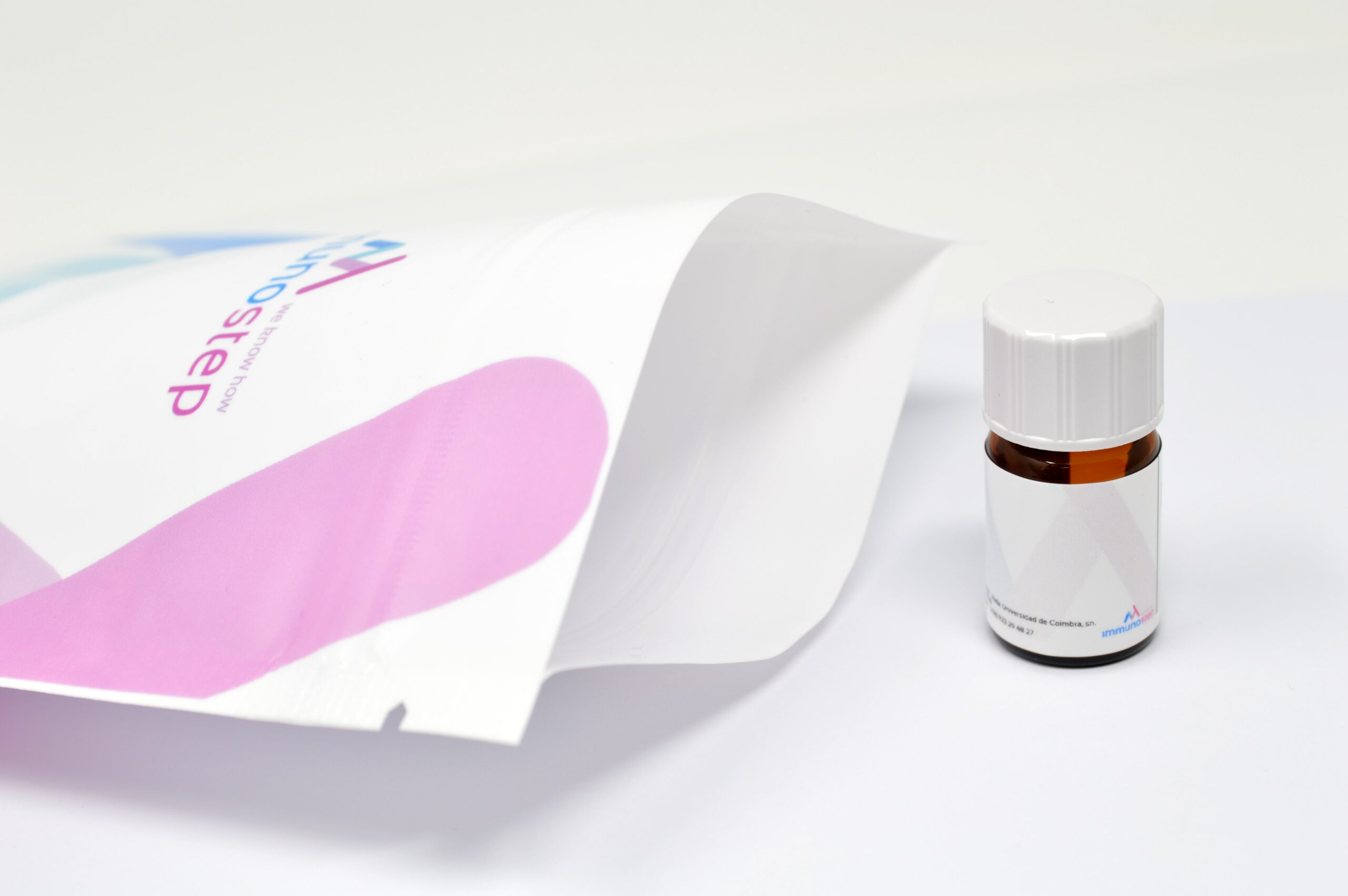- Products
- Oncohematology
- Antibodies
- Kits
- CAR T-cell
- Euroflow
- Single reagents
- Request info
- Resources and support
- Immunology
- Antibodies
- Single reagents
- Cross match determination (FCXM)
- FcεR1
- Ig subclasses
- Single reagents
- Kits
- TiMas, assessment of tissue macrophages
- Request info
- Resources and support
- Antibodies
- Exosomes
- Accesory reagents
- Software
- Oncohematology
- Services
- Peptide Production
- Design
- Modification
- Protein Services
- Expression and purification
- Freeze drying
- Monoclonal And Polyclonal Antibody Development
- Monoclonal
- Policlonal
- Specialized antibody services
- OEM/Bulk production
- Purification
- Conjugation
- Custom Exosome Services
- Isolation and purification
- Characterization
- Peptide Production
- Shop
- Support
- About Us
- Contact
- Shop
- Single Antibodies
- CD49d
CD49d
204,00 € excl.VAT – 531,00 € excl.VAT
This antibody reacts with the CD49d antigen, which recognizes the 150-kilodalton (kd) α-chain of very-late antigen (VLA)-4, a member of the integrin family of cell adhesion molecules. VLA-4, like other integrins, is a noncovalently associated heterodimeric glycoprotein composed of α and ß subunits and is involved in cell–cell and cell–extracellular matrix interactions. The ß-chain of the VLA-4 complex is the CD29 antigen, a 130-kd glycoprotein.
The CD29 antigen, also known as the ß-1 subunit, is common to the VLA family of integrins. When acting as a matrix receptor, the CD49d antigen binds to CS-1, an alternatively spliced domain of fibronectin. When functioning as a cell receptor, the CD49d antigen binds to the vascular cell-adhesion molecule-1 (VCAM-1). The interaction between the CD49d antigen and VCAM-1 is known to play an important role in stabilizing the adhesion of lymphocytes to endothelial cells and in mediating B-lymphocyte precursor/bone marrow stromal cell adhesion. The CD49d antigen, when associated with the ß integrin, forms a lymphocyte homing receptor for Peyer’s patch, binding tothe mucosal vascular addressin MAdCAM-1. The CD49d antigen is also involved in CD3-dependent CD4+ T-lymphocyte activation via its interaction with fibronectin.
Additional information
| Conjugated | |
|---|---|
| Size | |
| Regulatory Status | |
| Clone | |
| Gene ID | |
| Format | |
| Species Reactivity | |
| Isotype | |
| Tested Applications | |
| Clonality | |
| UniProt | |
| Mw | |
| Population | B- Cell, Dendrititic Cell, Endothelial Cell, Macrophage/Monocyte, NK Cell, Stem Cell/Precursor, T-Cell |
| Volumen/test | |
| Storage | Store in the dark at 2-8°C. |
| Other names | Alpha-4 integrin chain; VLA-4 alpha chain, CD49 antigen-like family member D, Integrin alpha-IV, VLA-4 subunit alpha. |
| Buffer | The reagent is provided in aqueous buffered solution containing protein stabilizer, and ≤0.09% sodium Azide (NaN3). |
| Immunogen | Tissue / cell preparation (JM leukemia line). |
| Concentration | 0,05 mg/ml, 0,2 mg/ml, 1 mg/ml |
Recomended usage
CD49b, clone ALC1/1 is a mAb primarily expressed on T and B lymphocytes and weakly expressed on monocytes. This reagent is effective for direct IF staining of human tissue for FCM analysis using ≤1 μg/10^6 cells.
References
| Product description | Reference | Title | Authors | Journal | Year | |
|---|---|---|---|---|---|---|
| Product description | Reference | Title | Authors | Journal | Year |
Related products
-
CD15
246,00 € excl.VAT – 468,00 € excl.VAT Select options This product has multiple variants. The options may be chosen on the product page -
CD11a
204,00 € excl.VAT – 531,00 € excl.VAT Select options This product has multiple variants. The options may be chosen on the product page -
CD117
275,00 € excl.VAT – 518,00 € excl.VAT Select options This product has multiple variants. The options may be chosen on the product page -
CD1a
198,00 € excl.VAT – 250,00 € excl.VAT Select options This product has multiple variants. The options may be chosen on the product page
